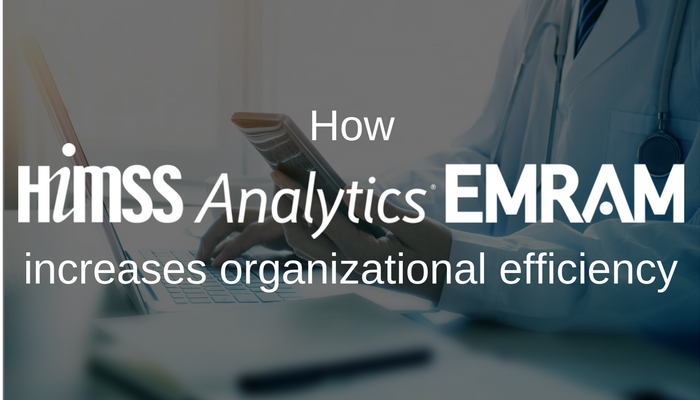Value of EMRAM Part 3: How EMRAM Increases Organizational Efficiency

Around the world the journey to Electronic Medical Record (EMR) adoption produces countless benefits - including organizational efficiency and positive return on investment for both hospitals and outpatient clinics. Healthcare providers cite a decrease in the number of staff required for both medical records management and clinical care delivery after they go live with their EMR. The advantages brought by availability and sharing of health information produces a significant amount of time and money saved.
The HIMSS Analytics EMR Adoption Model (EMRAM) measures the adoption and utilization of EMRs. The process ensures effective prioritization of functionality roll out to improve the efficiency of healthcare delivery.

Staff Effort
Staff effort is reduced considerably when an EMR allows fast and easy access to patient records. In a world of paper charts, the same staff spends hours “chasing charts” to locate them in piles of paper sitting in any of a number of hospital departments. Reducing paperwork makes tasks like filling out forms or processing documentation requests as easy as one click, thereby becoming a fraction of the workload they once were. Anyone who ever worked with paper charts knows all too well the drain that interpreting handwritten notes from physicians can become. A paperless environment can eliminate that headache all together.

Information Availability
Information availability is paramount to the success of any business in today’s world. When patient records are available simultaneously to all who need them day or night, everything from appointment scheduling to billing becomes less cumbersome. The EMRAM Validation process assesses an organization’s capability to share health information across multiple physical areas within a hospital such as radiology, medical records, and emergency departments to maximize the efficiency of the entire organization.
The EMRAM is a proven roadmap to improve health outcomes, which improves quality, safety and efficiency. The HIMSS Analytics database shows that more than 65% of healthcare facilities have advanced their capabilities to an EMRAM Stage 5 or greater since 2005.
Understanding how a technology deployment compares to the industry benchmark set by the EMRAM allows healthcare leaders to articulate the value they have achieved and ensures a strategy for sustainable success in a more efficient care delivery environment.
This post is part of a multipart series on the value of EMRAM. To learn How ERMAM Impacts Quality of Healthcare, read Part 1 here and to learn How EMRAM Improves Patient Safety, read Part 2 here.
